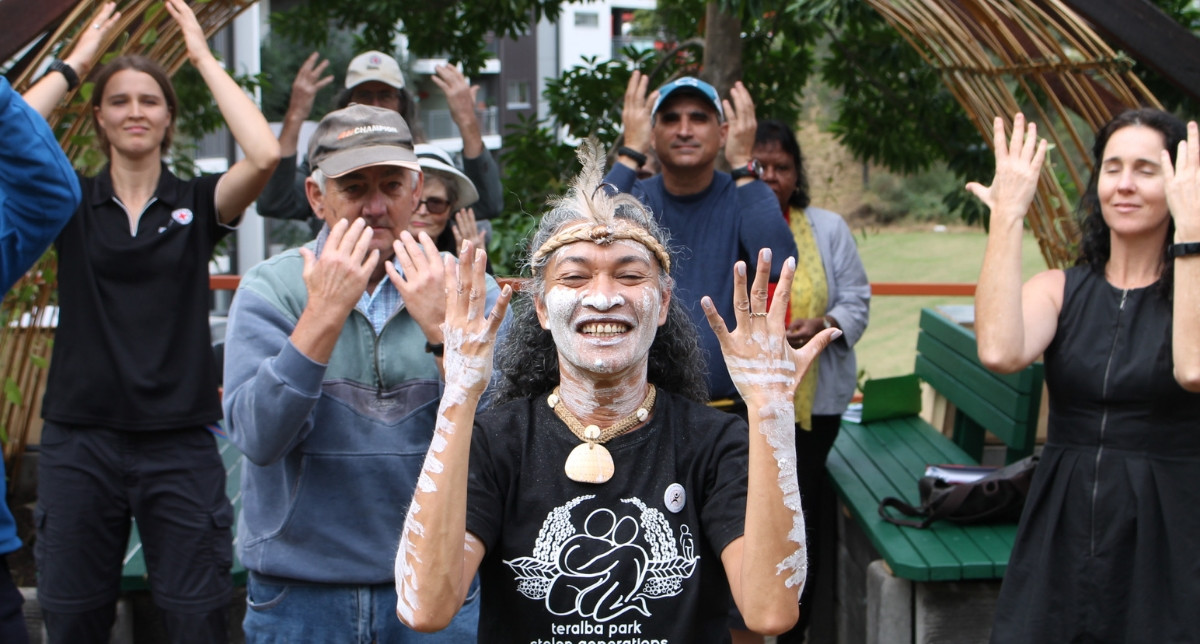
Maps, Galiwin’ku and a song
I am a person who loves maps. They are built up in layers over years and years. They represent both history and today.
They are filled within interesting information – sometimes practical, sometimes controversial, sometimes show linkages but always adding more and more depth. Maps contain stories and they show how things are connected to one another.
This is one map of Indigenous Australia which fascinates me. I am in awe of it. It awakens my mind. It makes me wonder about all those languages, all those customs, all those relationships, all those connections that have been lost and those that have been retained. It makes me wonder how vibrant our country was.
It makes me wonder what an amazing nation of peoples we would be if knew more about those different lands and the peoples who lived in them and made them. It’s no wonder that Indigenous peoples ask us to acknowledge these lands and their traditional ownership of them. It’s no wonder Indigenous peoples talk with pride of the country they come from. It’s no wonder Indigenous peoples have such close ties to their lands.
Reconciliation
Last week I shared my personal thoughts on social connection and how it underpins so much that is important. This week I want to talk about reconciliation and why it matters.
These articles are part of the challenge I have set for myself for Red Cross Calling, our biggest community fundraiser of the year. Each week during Red Cross Calling, which runs for the month of March, I will write about one area of our work and why I believe it is important. Afterwards I hope you will be inspired to support Red Cross' work like this by donating to my Red Cross Calling fundraising page.
So on to reconciliation.
At Australian Red Cross we are on our own important reconciliation journey – 'From the head to the heart'. Our vision is for a unified Australia, built on dignity, safety and wellbeing for Aboriginal and Torres Strait Islander peoples.
Our dream is of an Australia where we learn about and acknowledge our shared history, its impact on Aboriginal and Torres Strait Islander peoples and its painful and confronting truths. Where we take pride in their ancient histories, cultures and achievements, where we enable Aboriginal and Torres Strait Islander people’s to implement their own solutions and where we walk alongside them.
Working in Galiwin’ku
An example of our approach is clearly seen in the community of Galiwin’ku, in the Northern Territory, where we have had the privilege of working for 11 years.
In 2014, Galiwin’ku was hit by a strong cyclone and a lot community buildings suffered major damage. With the people of Galiwin’ku we agreed what role we could play in rebuilding and over the next few years we designed and built a new community centre together. That centre is now an important part of the community including for the Yolgnu Wananhamirr Mitj (YWM) women.
When we visited Galiwin’ku for the centre’s official opening last year the YWM women shared with us their Dhatam, a written document which explains their history and their journey with the Yalu Marnithinyaraw Indigenous Corporation and Red Cross.
The Dhatam explains processes and the ways we work alongside each other. It sets out strengths of this way of working, of desires and reflects on the journey past and ongoing. It is a powerful piece of work and Red Cross are proud to have received it.
This is what the Galiwinku Vision for Dhatam model says:
- "Nhaman nganapurr’ka dhukarr’tja ngunhi gatjpuyunawuy’tja, nhakurr ngilimurr ga ngirrimbum. Ngirrimbumany nganapurr ga balayin burwu’lil ngunhi ga ngorra dharrwa mangutji mala nhakun Djamarrkuli, ngunhi walal ga galkun ga nhama wanha ngayi dhukarr dhunupa ga magaya bumakku Djamarrkuliw. Limurrtja ga djamamirryaman marr Djamarrkuliiydja dhu dharangana manymak’nha wiyingumirriw’nha walangaw marrtjinaraw." In the Yolngu Matha language with words by Djandi Ganamabarr – YWM.
- Translation: "We are looking at the road that leads to the vision. We are walking the pathway to get there to the flower, to where the seeds are. The seeds are the children, they are watching and waiting for their goal and their value, their future. They can choose whatever they want when we get to the seeds. From the effort we make the children will have a better life to make their free choices." Translation by Gaylene Gurruwiwi YWM and Helen Nyomba.
It really is worth taking a seat and reading cover to cover this case study about the initiative. It took me about an hour to read it thoroughly and there are many learnings for so much of what we do in Australia and overseas.
And finally my song for this week’s theme Geoffrey Gurrumul Yunupingu's 'Wiyathul'. This music is just so beautiful.
This is the second of my Red Cross Calling conversations. For over 70 years we have held Red Cross Calling – a community fundraising event – in March. My approach this year is to talk about one aspect of our work each week of the month. If you wish to donate to my fundraising efforts you can do so here.
Judy Slatyer
